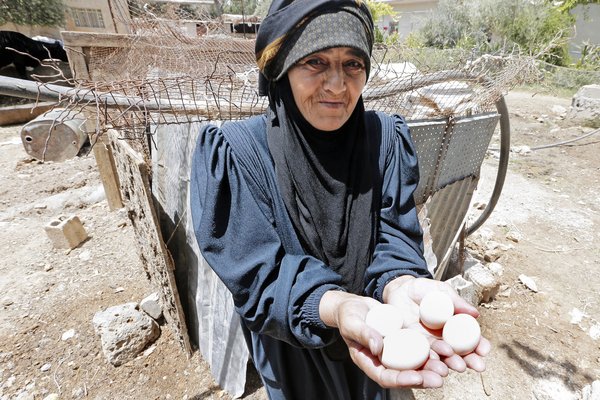- Share this article
- Subscribe to our newsletter
Rising hunger in the Near East and North Africa
Hunger in the Near East and North Africa (NENA) region continues to rise as conflicts and protracted crises have spread and worsened since 2011, the Food and Agriculture of the United Nations (FAO) warned in May 2019. 52 million people in the region are estimated to be suffering from chronic undernourishment.
Conflict continues to be the main driver of hunger across the region. More than two-thirds of hungry people in the NENA region - approximately 34 million people - live in conflict-affected countries, compared to 18 million hungry people in countries that are not impacted directly by conflict. Stunting, wasting and undernutrition are also far worse in conflict countries than in other countries.
The region is not facing just a hunger crisis, for some of the highest rates of obesity are also found in countries within the region, putting pressure on people’s health, lifestyles and the national health systems and economies. Addressing obesity requires food systems that ensure that people have access to healthy, nutritious food and also increased public awareness and information on the risks associated with overweight and obesity.
Conflicts undermine rural transformation
Conflicts undermine the region’s Zero Hunger efforts, but also the degree of rural transformation, FAO’s Regional Overview of Food Security and Nutrition in the Near East and North Africa shows. Rural areas accommodate around 40 per cent of the population, where the majority of poor are living.
Unemployment, particularly for young people and women across all age groups, is a significant challenge in the NENA region and is often higher than in other regions of the world. This is aggravated by rural-urban gaps – with significant disparities in living standards and poverty rates between rural and urban areas – and differences in labour productivity between traditional agriculture and industry and services. This gap is deepened by differences in access to education, health as well as other public services and housing.
Average wages for people employed in agriculture are likely to be far below those of workers outside the sector. Partially as a result of lower wages in agriculture, rural areas in the NENA region generally have higher income poverty rates than urban areas. On average, rural poverty is about twice as high as poverty in urban areas.
At a regional level, there are significant opportunities for transforming agriculture in a sustainable way, starting with the provision of improved access to markets for farmers, promoting investments in agriculture, transfer of technology and other innovations, more efficient and effective management of water resources, as well as key policy changes that support the shift from subsistence farming to commercial and diversified production systems.
(FAO/ile)
More information at FAO website





Add a comment
Be the First to Comment